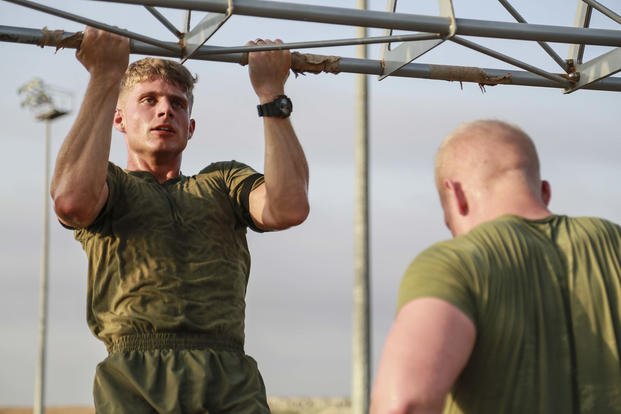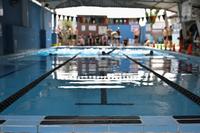Since 9-11, many former military members have asked me about rejoining active units or challenging themselves to try for special operations positions after several years out of the military or in reserve units.
This email comes from a Marine reservist, who is taking that challenge to go active duty again and push for Marine RECON units.
His email reads:
"I am in my late 30s and will be going to the Marine Corp Basic Recon Course (BRC) in a few months. I am pretty solid on my PT, but running and rucking is getting more difficult to improve on. Is it possible to get better at running? Do you have any plans for running USMC distances?"
First of all, anyone seeking this type of rigorous activity, especially near 40 years old, should be in excellent condition and very flexible. Your increased flexibility will be the result of a daily stretching program that will help you better recover from the daily grind of challenging workouts. Whether you are a 40-year-old military person, a law enforcement officer or a person who likes to do marathons or triathlons, you should start a flexibility routine.
This will help you break up the lactic acid that builds in your muscles. One tip: Hold each stretch you do for 4-5 deep inhales and exhales. Your inhales should be three or more seconds long, followed by a full exhale. This also will help you get oxygen to the muscles, adding an increased effect to lactic-acid release.
I have a running plan that I have made for people seeking better performance in the three- to five-mile timed runs you will see in the U.S. Marine Corps and other advanced military training schools. Running will get easier as long as you practice running 4-5 times a week and ruck march with 25-50 pounds on your back 1-2 times a week.
As far as rucking, this should help.
The writer did not mention anything about your swimming in his email. At Basic Reconnaissance Course (BRC), you also will face several challenging water events in the testing phase:
- 25-meter underwater swim
- Five-minute float
- 30-minute tread with clothing
- Tower jumps
- Weapon retrieval at depths of 9-15 feet
- 500-meter swim
Then you have to do the USMC PFT of pull-ups, sit-ups and a three-mile timed run. Check out Passing Military Swim Tests in the Military.com Running and Cardio archive. I highly recommend swimming 4-5 times a week if you are trying out for USMC RECON, Navy SEALs, US Navy SAR Swimmer, USCG Helicopter Rescue Swimmer and Air Force PJ's, to name a few.
Learn More About Special Operations Forces
For those who may have issues with the PT portion of getting back into active-duty training and are contemplating pushing the envelope with more specialized training, try these workouts:
Build up to do at least 100 pull-ups in every pull-up workout. Do so for three days a week -- every other day -- read The PT Pyramid for more details.
1. Pyramid Pull-ups/Push-ups/Sit-ups Combo
Build up to 10 pull-ups, 20 push-ups and 30 sit-ups on the peak of the pyramid. After you have completed the entire pyramid, that is 100 pull-ups, 200 push-ups and 300 sit-ups or other abs of choice.
2. Supersets
This workout will push your push-ups and sit-ups to 300 reps each and keep your pull-ups between 50-100 reps.
Repeat 10 times.
- Pull-ups 5-10
- Push-ups 10
- Sit-ups 10
- Wide push-ups 10
- Reverse crunches 10
- Tri push-ups 10
- Double crunches 10
3. Max pull-ups in the fewest sets possible
This workout is one of my favorites for building from 15 pull-ups to 25-30 reps. Many people get stuck at 10-15 pull-ups; this workout will get you over that hump. I recommend trying this workout only once a week in conjunction with the two above PT workouts during the week.
Shoot for:
- 100 pull-ups
- 200 push-ups
- 300 sit-ups
Alternate from one max-rep set exercise to another until you reach the above numbers. The time limit on each exercise is two minutes per set.
Thanks to all of you who are seeking military or law enforcement professions since Sept. 11, especially those men and women who are above the average age. Due to overwhelming response from your requests to defend your country, the military has increased its age limits to boot camp, and many special operations forces now grant age waivers. Good luck on your journey.
Find Available Special Operations Opportunities
Special Operations fitness articles:
- Army Special Operations
- Navy Special Operations
- Air Force Special Operations
- Marine Corps Special Operations
- All Special Operations Articles
Stew Smith is a former Navy SEAL and fitness author certified as a Strength and Conditioning Specialist (CSCS) with the National Strength and Conditioning Association. Visit his Fitness eBook store if you're looking to start a workout program to create a healthy lifestyle. Send your fitness questions to stew@stewsmith.com.
Want to Learn More About Military Life?
Whether you're thinking of joining the military, looking for fitness and basic training tips, or keeping up with military life and benefits, Military.com has you covered. Subscribe to Military.com to have military news, updates and resources delivered directly to your inbox.


















